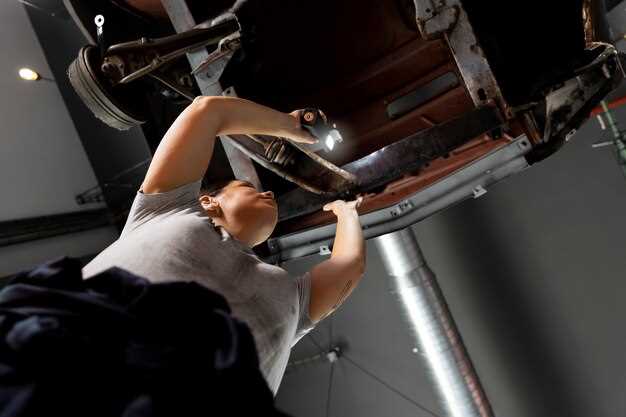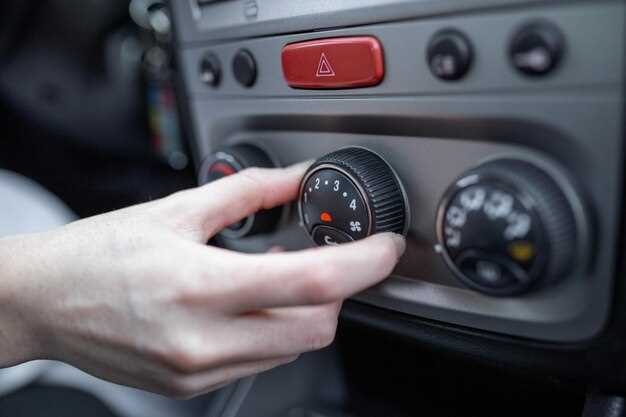
How to Fix Weak Car Heater Performance
- Arthur Rodriquez
- 0
- Posted on

As winter approaches, the importance of a well-functioning car heater becomes increasingly evident. The ability to maintain a comfortable cabin temperature is essential not just for comfort but also for safety while driving in cold weather conditions. Many car owners may discover that their heater is not performing as expected, leading to frustration during chilly months. However, before heading to a mechanic for a costly repair, there are several simple fixes that you can attempt to enhance your car heater’s performance.
One common issue affecting heater efficiency is a coolant leak, which can diminish heat output significantly. Regularly checking the coolant levels and ensuring that the system is leak-free is crucial for optimal heater performance. Additionally, a clogged heater core can obstruct the flow of hot coolant, rendering your heater ineffective. Flushing the heater core can often resolve this problem and restore heat to your vehicle.
Another factor to consider is the condition of the cabin air filter. A dirty or blocked filter can restrict airflow into the cabin, making it difficult for the heater to circulate warm air effectively. Replacing the cabin air filter at regular intervals is a simple and cost-effective way to improve your car heater’s performance. By taking these proactive steps and addressing potential repair issues, you can ensure that your car’s heating system functions efficiently throughout the winter months.
Check and Replace Your Cabin Air Filter

The cabin air filter plays a crucial role in your vehicle’s heating system. It filters out dust, pollen, and other pollutants from the air entering the cabin, ensuring a clean and comfortable environment. A clogged filter can significantly hinder the performance of your car heater.
Here’s how to check and replace your cabin air filter:
- Locate the Filter:
Check your owner’s manual to find the exact location of the cabin air filter. It’s usually found behind the glove compartment or under the dashboard.
- Inspect the Filter:
Remove the filter and inspect it for dirt and debris accumulation. A dirty filter will restrict airflow and may cause your heater to work harder than necessary.
- Replace if Necessary:
If the filter appears dirty or is more than 12,000 to 15,000 miles old, it’s time to replace it. Purchase a compatible replacement from an auto parts store.
- Install the New Filter:
Carefully insert the new filter, ensuring it fits snugly into its housing. Make sure the airflow direction matches the markings on the filter.
- Test the Heater:
Start your car and test the heater. You should notice improved airflow and performance, enhancing your overall comfort during colder months.
Regularly checking and replacing your cabin air filter is a simple repair that can significantly improve your car heater’s efficiency. A clean filter ensures optimal airflow, resulting in better performance and a more enjoyable driving experience.
Inspect and Refill Coolant Levels
One of the most critical factors affecting your car’s heater performance is the coolant level. The coolant circulates through the engine and the heater core, transferring heat to the cabin. If the coolant levels are low, the heater will not function effectively, leading to inadequate warmth during cold weather.
Start by checking the coolant reservoir, typically located near the engine. Ensure the vehicle is cool before opening the cap to prevent burns. If the coolant level is below the recommended mark, it’s essential to refill it with the appropriate type of coolant specified in your owner’s manual.
Moreover, it’s important to inspect for potential leaks in the coolant system. Leaks can significantly decrease coolant levels over time and lead to overheating, which may necessitate repairs. Keep an eye out for signs such as puddles under the car or a sweet smell, which could indicate a coolant leak.
Regularly maintaining optimal coolant levels not only enhances heater performance but also protects the engine from damage. By ensuring your coolant is topped up and free from contamination, you can maximize your vehicle’s heating capabilities and extend its overall lifespan.
Examine the Heater Core for Blockages

The heater core is a crucial component of your car’s heating system, playing a significant role in distributing warm air throughout the cabin. Over time, this vital part can accumulate dirt, debris, and coolant deposits, leading to reduced heater performance. To ensure your car’s heater functions effectively, it is essential to examine the heater core for any blockages.
Start by locating the heater core, which is usually situated under the dashboard, connected to the engine’s cooling system. Inspect the hoses leading to and from the heater core for signs of leaks or swelling, as these can indicate potential blockages. A thorough visual inspection of the heater core itself can reveal any visible build-up or corrosion on the surface.
If you suspect a blockage, perform a hose test. Disconnect the hoses from the heater core and use a garden hose to flush water through it. Clear water flow indicates a clean heater core, while restricted flow suggests obstructions. Using a flushing agent may help dissolve stubborn deposits that hinder performance.
After cleaning, reattach the hoses and refill the coolant system as necessary. Always check for leaks after completing the examination and ensure the heater operates at optimal levels. Regular maintenance of the heater core can significantly enhance your car’s heating efficiency and prolong its lifespan.